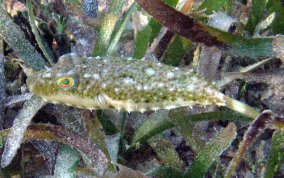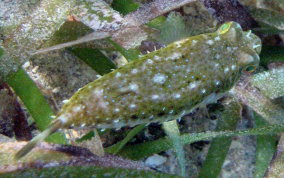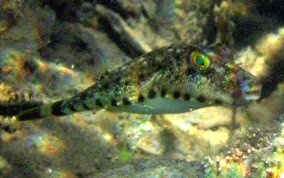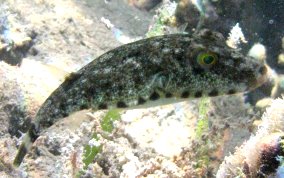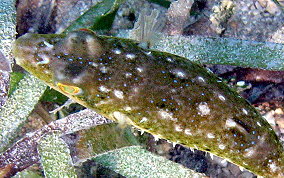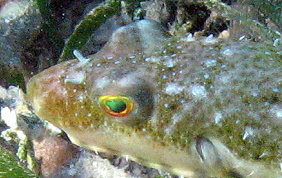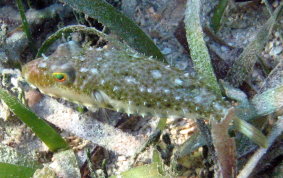Bandtail Pufferfish
Sphoeroides spengleriThey are named for their ability to inflate themselves to several times their normal size by swallowing water or air when threatened. They have small, almost sandpaper-like spines. Female Pufferfish lay huge numbers of eggs, up to 200,000 per fish. The tiny eggs stick to each other and settle to the bottom in huge masses. They hatch in about five days. When first born the larvae are brightly colored and begin feeding three days after they hatch. Young puffers are capable of inflating at seven days old when they are less than a half-inch long. They have four large teeth, fused into an upper and lower plate, which are used for crushing the shells of crustaceans and mollusks, their natural prey.
The row of blotches on the bottom sides of the body can distinguish this little fellow. Most often found around sea grass beds, they blend in perfectly with their dark olive dappled coloring. They move with their pectoral fins and it seems they only open their tail fins for balance and turning. They will allow a fairly close approach if you move slowly. They have four large teeth, fused into an upper and lower plate, which are used for crushing the shells of crustaceans and mollusks, their natural prey. They have the body thorns, like other Pufferfishes, and like the Checkered Pufferfish, their eyes glow like gold lined emeralds. See my YouTube Video of the Bandtail Pufferfish.
